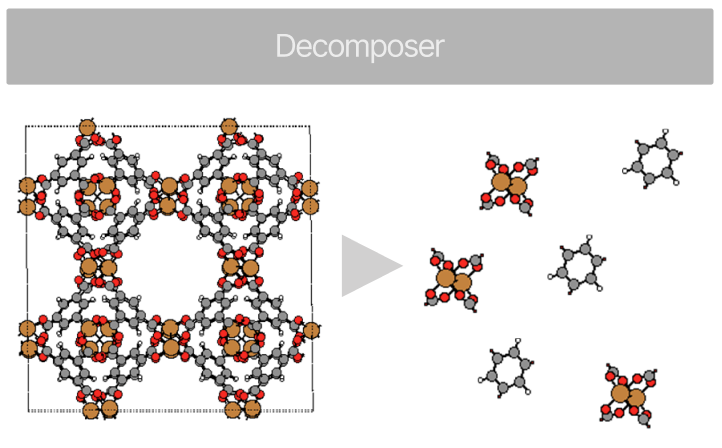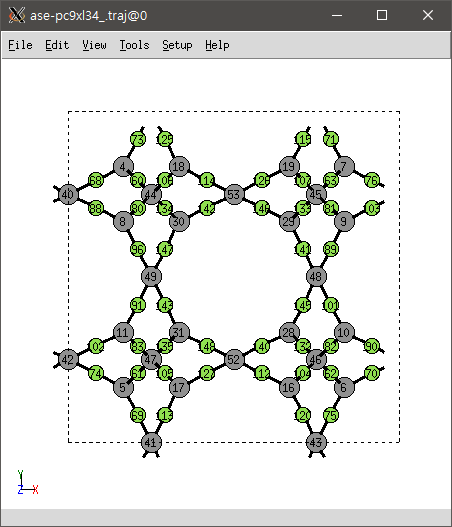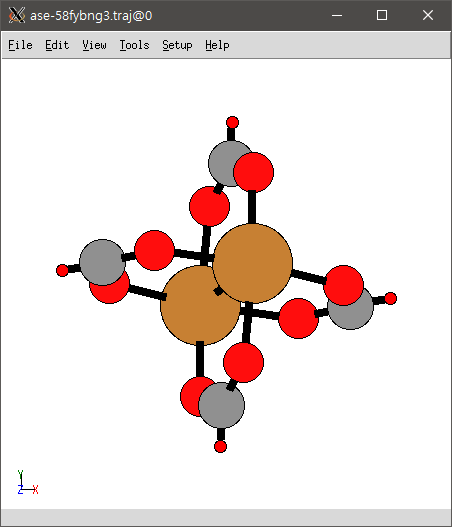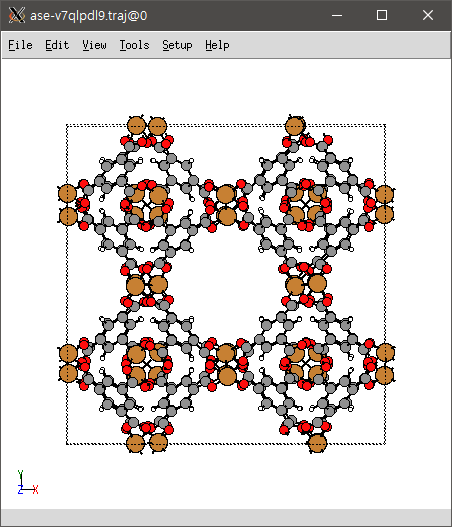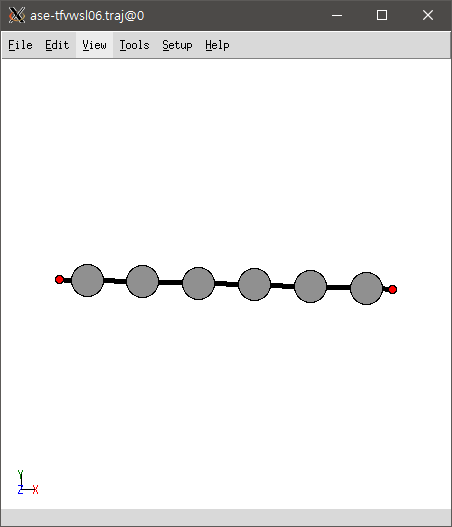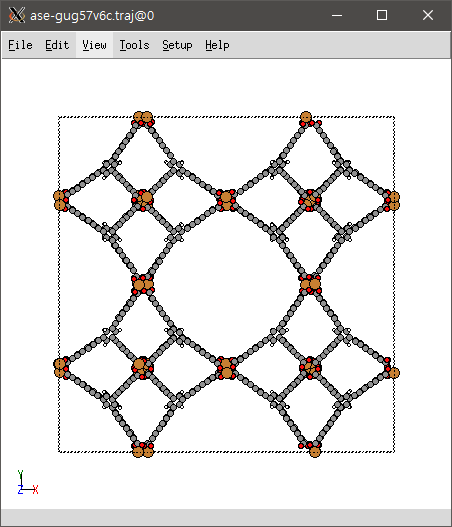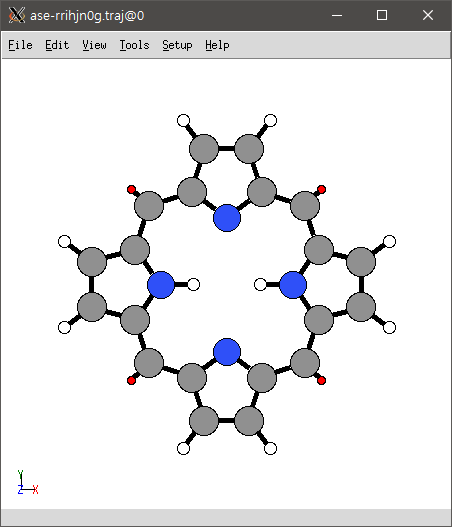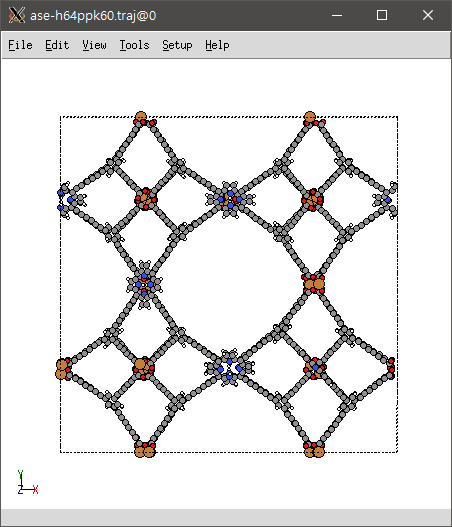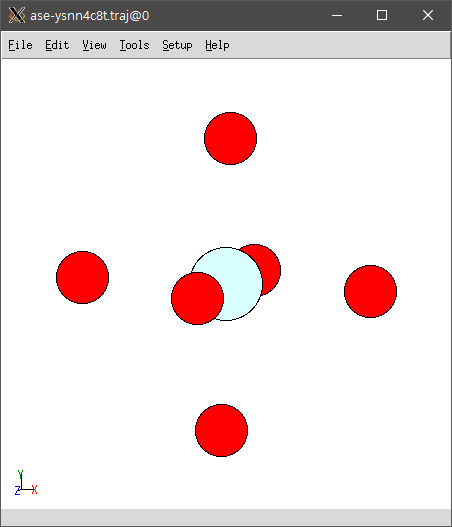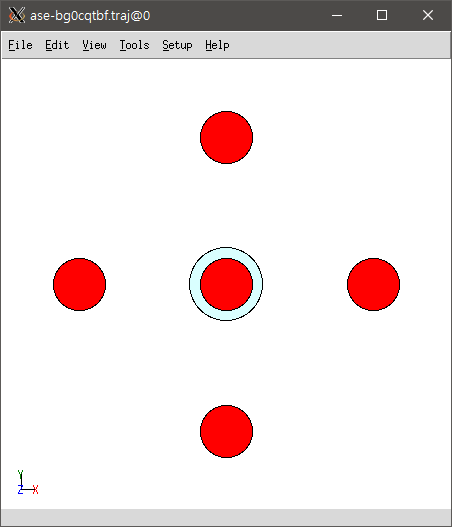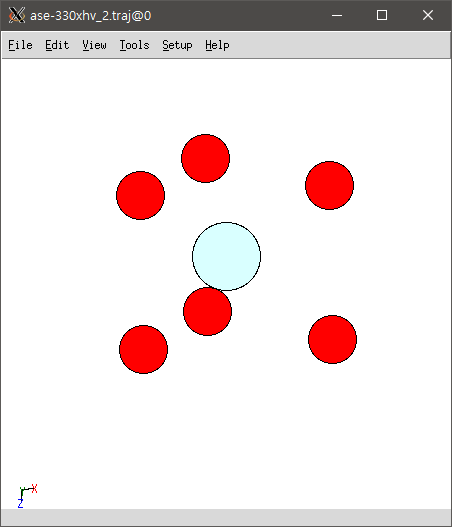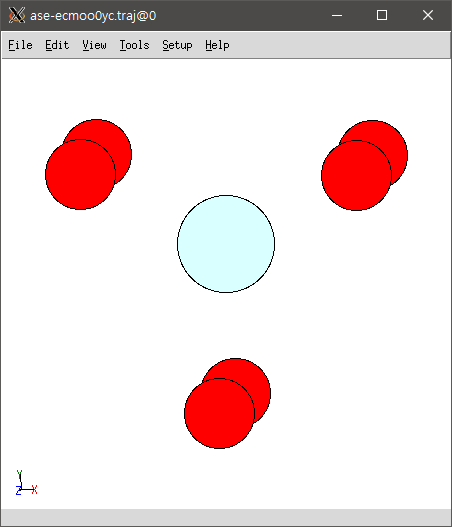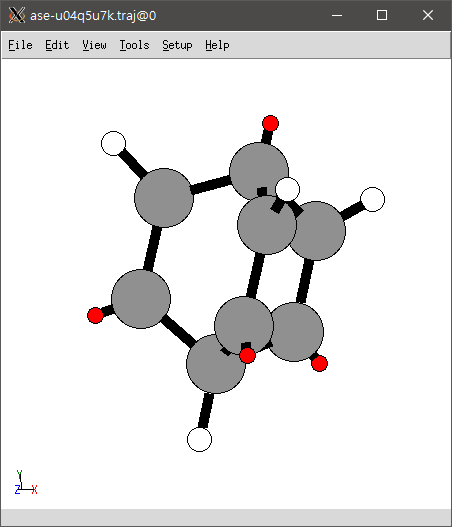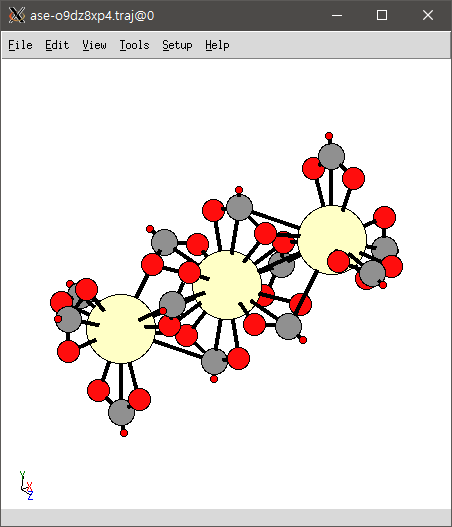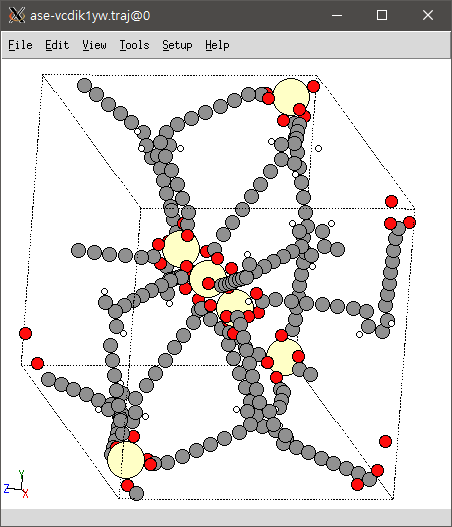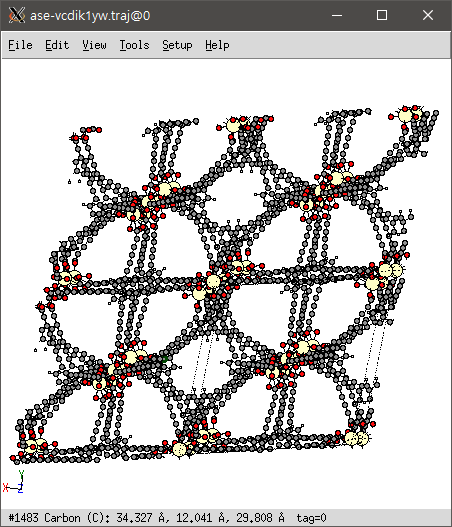Porous materials Maker
Python library for the construction of porous materials using topology and building blocks.
Development Roadmap (updated 2023.08.01):
- Enrich the code with descriptive docstrings.
- Fortify the project by implementing comprehensive test code.
- Development of an enhanced algorithm for improved placement of edge building blocks (considering symmetry).
Version: 0.2.1
New feature added: Building blocks with partial charge
The example can be found in here.
Thank you for your valuable contribution aniruddha-seal!
Version: 0.2.0
New feature added: A module for extracting building blocks from MOFs
This method is only valid for Linux and macOS as jax supports those operating
systems. It is recommended to use WSL for Windows users.
pip install pormake
pip install git+https://github.com/Sangwon91/PORMAKE.git
git clone https://github.com/Sangwon91/PORMAKE.git
pip install -e PORMAKE
Import pormake .
import pormake as pmLoad tbo topology from the default database.
database = pm.Database()
tbo = database.get_topo("tbo")You can check the information using .describe() method.
tbo.describe()In this case, there are two node types (0 and 1) and one edge type ((0, 1)). CN in the node information indicates coordination number (number of adjacent nodes).
===============================================================================
Topology tbo
Spacegroup: Fm-3m
-------------------------------------------------------------------------------
# of slots: 152 (56 nodes, 96 edges)
# of node types: 2
# of edge types: 1
-------------------------------------------------------------------------------
Node type information
-------------------------------------------------------------------------------
Node type: 0, CN: 3
slot indices: 0, 1, 2, 3, 4, 5, 6, 7, 8, 9
10, 11, 12, 13, 14, 15, 16, 17, 18, 19
20, 21, 22, 23, 24, 25, 26, 27, 28, 29
30, 31
Node type: 1, CN: 4
slot indices: 32, 33, 34, 35, 36, 37, 38, 39, 40, 41
42, 43, 44, 45, 46, 47, 48, 49, 50, 51
52, 53, 54, 55
-------------------------------------------------------------------------------
Edge type information (adjacent node types)
-------------------------------------------------------------------------------
Edge type: (0, 1)
slot indices: 56, 57, 58, 59, 60, 61, 62, 63, 64, 65
66, 67, 68, 69, 70, 71, 72, 73, 74, 75
76, 77, 78, 79, 80, 81, 82, 83, 84, 85
86, 87, 88, 89, 90, 91, 92, 93, 94, 95
96, 97, 98, 99, 100, 101, 102, 103, 104, 105
106, 107, 108, 109, 110, 111, 112, 113, 114, 115
116, 117, 118, 119, 120, 121, 122, 123, 124, 125
126, 127, 128, 129, 130, 131, 132, 133, 134, 135
136, 137, 138, 139, 140, 141, 142, 143, 144, 145
146, 147, 148, 149, 150, 151
===============================================================================
You can also visualize the topology using .view() method.
tbo.view()In order to construct HKUST-1, copper paddle-wheel cluster and BTC linker are required. You can load the building blocks from the database. All visual description of the building blocks can be found at here.
# bb: budilding block.
# Copper paddle-wheel.
N409 = database.get_bb("N409")
# BTC linker.
N10 = database.get_bb("N10")You can visualize building blocks using .view() method.
N409.view()
N10.view()Next, make Builder instance.
builder = pm.Builder()Make node type to building block dictionary. This dictionary is used for the construction of the MOF. Building blocks have to be assigned to each node type (in this case, 0 and 1).
# N10 is assigned to node type 0 because the coordination number of node type 0 is 3.
# Likewise, N409 is assigned to node type 1.
node_bbs = {
0: N10,
1: N409
}Construct HKUST-1 using builder.
HKUST1 = builder.build_by_type(topology=tbo, node_bbs=node_bbs)You can visualize constructed MOF using .view() method.
HKUST1.view()And save the HKUST-1 in cif format.
HKUST1.write_cif("HKUST-1.cif")From the above example, we can insert edge building blocks between N409 and N10.
Load long and thin edge building block from the database.
E41 = database.get_bb("E41")
E41.view()Make edge type to building block dictionary. Edge type is a tuple of the types of adjacent nodes: (0, 1).
edge_bbs = {(0, 1): E41}Make new MOF with edge_bbs.
MOF = builder.build_by_type(topology=tbo, node_bbs=node_bbs, edge_bbs=edge_bbs)Check the constructed MOF.
MOF.view()E41 is inserted properly between N409 and N10.
pormake can assign different building block to each slot. In this example, we will replace some of N409 to porphyrin.
Load porphyrin from the database.
N13 = database.get_bb("N13")
N13.view()Before the next step, you should know the equivalence of the following two approaches for MOF construction.
# Approach 1.
MOF = builder.build_by_type(topology=tbo, node_bbs=node_bbs, edge_bbs=edge_bbs)
# Approach 2.
# Same operation with different code.
bbs = builder.make_bbs_by_type(topology=tbo, node_bbs=node_bbs, edge_bbs=edge_bbs)
MOF = builder.build(topology=tbo, bbs=bbs)Here, bbs is the list of building blocks. bbs[i] is the building block at i'th slot.
Change some of N409 to N13. You can get the indices from the tbo.describe()
bbs = builder.make_bbs_by_type(topology=tbo, node_bbs=node_bbs, edge_bbs=edge_bbs)
bbs[33] = N13.copy()
bbs[38] = N13.copy()
bbs[40] = N13.copy()
bbs[49] = N13.copy()
bbs[53] = N13.copy()
bbs[55] = N13.copy()Make chimera MOF with modified bbs.
MOF = builder.build(topology=tbo, bbs=bbs)
MOF.view()The root-mean-square deviation of atomic positions (RMSD) between node and building block can be used as a criterion for determining whether a particular building block can be located to a particular node.
Load metal cluster of triangular prism shape.
N198 = database.get_bb("N198")
N198.view()Load two test topologies: pcu and acs. pcu has nodes of octahedron shape and acs has nodes of triangular prism shape. Each topology has single node type (0).
pcu = database.get_topo("pcu")
pcu.describe()===============================================================================
Topology pcu
Spacegroup: Pm-3m
-------------------------------------------------------------------------------
# of slots: 4 (1 nodes, 3 edges)
# of node types: 1
# of edge types: 1
-------------------------------------------------------------------------------
Node type information
-------------------------------------------------------------------------------
Node type: 0, CN: 6
slot indices: 0
-------------------------------------------------------------------------------
Edge type information (adjacent node types)
-------------------------------------------------------------------------------
Edge type: (0, 0)
slot indices: 1, 2, 3
===============================================================================
acs = database.get_topo("acs")
acs.describe()===============================================================================
Topology acs
Spacegroup: P63/mmc
-------------------------------------------------------------------------------
# of slots: 8 (2 nodes, 6 edges)
# of node types: 1
# of edge types: 1
-------------------------------------------------------------------------------
Node type information
-------------------------------------------------------------------------------
Node type: 0, CN: 6
slot indices: 0, 1
-------------------------------------------------------------------------------
Edge type information (adjacent node types)
-------------------------------------------------------------------------------
Edge type: (0, 0)
slot indices: 2, 3, 4, 5, 6, 7
===============================================================================
You can check the shape of node via LocalStructure object.
# 0 is the type of node.
# Octahedron shape.
pcu_local_0 = pcu.unique_local_structures[0]
pcu_local_0.view()# 0 is the type of node.
# Triangular prism shape.
acs_local_0 = acs.unique_local_structures[0]
acs_local_0.view()Make Locator instance.
locator = pm.Locator()Calculate RMSD values using the locator. As expected, you can see that the RMSD value of the pcu (0.42) is bigger than that of acs (0.02).
acs_rmsd_0 = locator.calculate_rmsd(acs_local_0, N198)
print("RMSD at acs node type 0: %.2f" % acs_rmsd_0)RMSD at acs node type 0: 0.02
pcu_rmsd_0 = locator.calculate_rmsd(pcu_local_0, N198)
print("RMSD at pcu node type 0: %.2f" % pcu_rmsd_0)RMSD at pcu node type 0: 0.42
In general, RMSD < 0.3 is good threshold for the MOF constructions.
Load ith topology.
ith = database.get_topo("ith")
ith.describe()===============================================================================
Topology ith
Spacegroup: Pm-3n
-------------------------------------------------------------------------------
# of slots: 32 (8 nodes, 24 edges)
# of node types: 2
# of edge types: 1
-------------------------------------------------------------------------------
Node type information
-------------------------------------------------------------------------------
Node type: 0, CN: 4
slot indices: 0, 1, 2, 3, 4, 5
Node type: 1, CN: 12
slot indices: 6, 7
-------------------------------------------------------------------------------
Edge type information (adjacent node types)
-------------------------------------------------------------------------------
Edge type: (0, 1)
slot indices: 8, 9, 10, 11, 12, 13, 14, 15, 16, 17
18, 19, 20, 21, 22, 23, 24, 25, 26, 27
28, 29, 30, 31
===============================================================================
Load and visualize node building blocks. N114 is the building block of low-symmetry.
node_bbs = {
0: database.get_bb("N3"),
1: database.get_bb("N114"),
}
for bb in node_bbs.values():
bb.view()Check RMSD values.
for key, bb in node_bbs.items():
local = ith.unique_local_structures[key]
rmsd = locator.calculate_rmsd(local, bb)
print("RMSD: %.2f" % rmsd)RMSD: 0.16
RMSD: 0.27
Load edge building block.
edge_bbs = {(0, 1): database.get_bb("E41")}
edge_bbs[(0, 1)].view()Make MOF.
MOF = builder.build_by_type(topology=ith, node_bbs=node_bbs, edge_bbs=edge_bbs)
MOF.view()PORMAKE can read building blocks from xyz file. In xyz file, all connection points are denoted as symbol X.
Users can assign bond manually as shown below:
N10.xyz:
12
9 10 11
C 0.0000 0.0000 0.0000
C 0.7700 -1.3336 0.0000
C 2.3100 -1.3336 0.0000
C 3.0800 0.0000 0.0000
C 2.3100 1.3336 0.0000
C 0.7700 1.3336 0.0000
H 0.2000 -2.3210 0.0000
H 4.2200 0.0000 0.0000
H 0.2000 2.3210 0.0000
X -0.7500 0.0000 0.0000
X 2.6850 -1.9831 0.0000
X 2.6850 1.9831 0.0000
0 1 A
0 5 A
1 2 A
1 6 S
2 3 A
3 4 A
3 7 S
4 5 A
5 8 S
9 0 S
10 2 S
11 4 S
The first two columns are the indices of atoms consisting the bond and the third term is bond type.
Supported bond types include single (A), double (D), triple (T), and aromatic (A).
If no bond information is fed, bonds are automatically generated by distance threshold but all bond types are assignged to single bond.
You can load building block using BuilingBlock object like below:
bb = pm.BuildingBlock('N10.xyz')